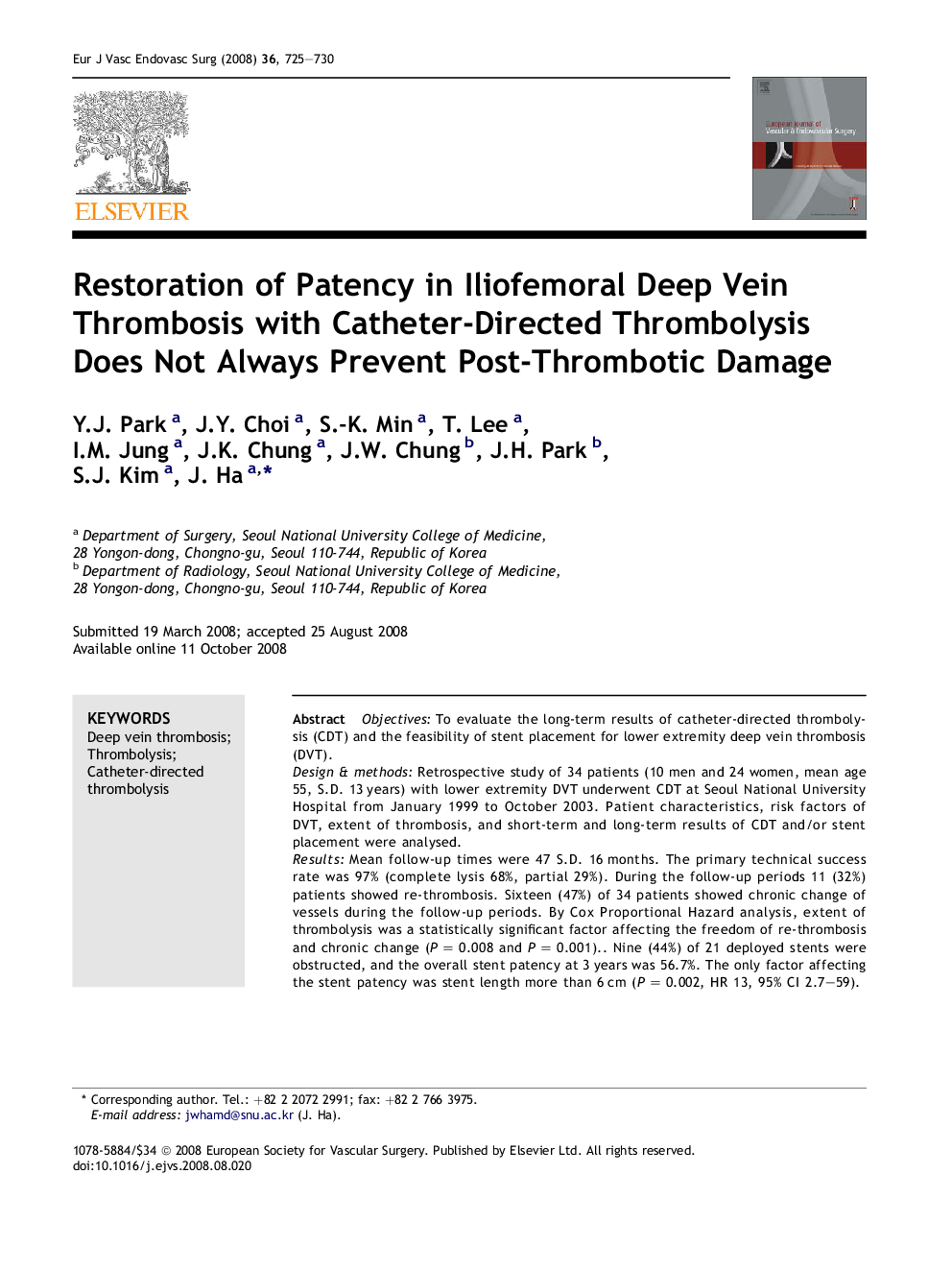| Article ID | Journal | Published Year | Pages | File Type |
|---|---|---|---|---|
| 2914542 | European Journal of Vascular and Endovascular Surgery | 2008 | 6 Pages |
ObjectivesTo evaluate the long-term results of catheter-directed thrombolysis (CDT) and the feasibility of stent placement for lower extremity deep vein thrombosis (DVT).Design & methodsRetrospective study of 34 patients (10 men and 24 women, mean age 55, S.D. 13 years) with lower extremity DVT underwent CDT at Seoul National University Hospital from January 1999 to October 2003. Patient characteristics, risk factors of DVT, extent of thrombosis, and short-term and long-term results of CDT and/or stent placement were analysed.ResultsMean follow-up times were 47 S.D. 16 months. The primary technical success rate was 97% (complete lysis 68%, partial 29%). During the follow-up periods 11 (32%) patients showed re-thrombosis. Sixteen (47%) of 34 patients showed chronic change of vessels during the follow-up periods. By Cox Proportional Hazard analysis, extent of thrombolysis was a statistically significant factor affecting the freedom of re-thrombosis and chronic change (P = 0.008 and P = 0.001). Nine (44%) of 21 deployed stents were obstructed, and the overall stent patency at 3 years was 56.7%. The only factor affecting the stent patency was stent length more than 6 cm (P = 0.002, HR 13, 95% CI 2.7–59).ConclusionLong-term results of CDT are not satisfactory because of the high recurrence rate of DVT and it cannot prevent chronic post-thrombotic damage to the affected vessels despite long-term anticoagulation therapy. Careful long-term surveillance of the venous function is highly recommended after CDT.
